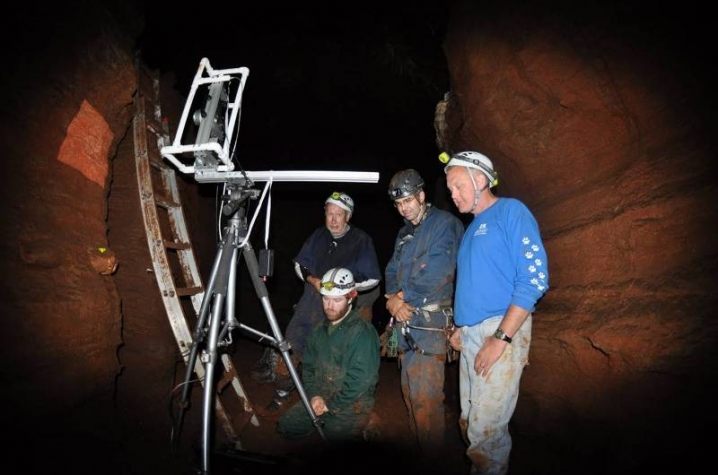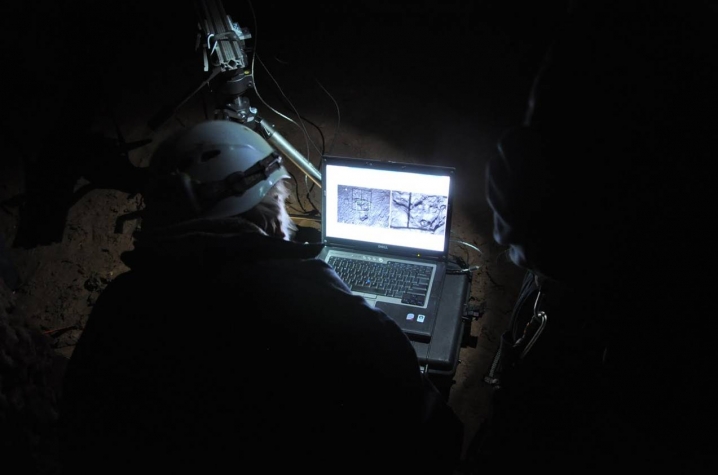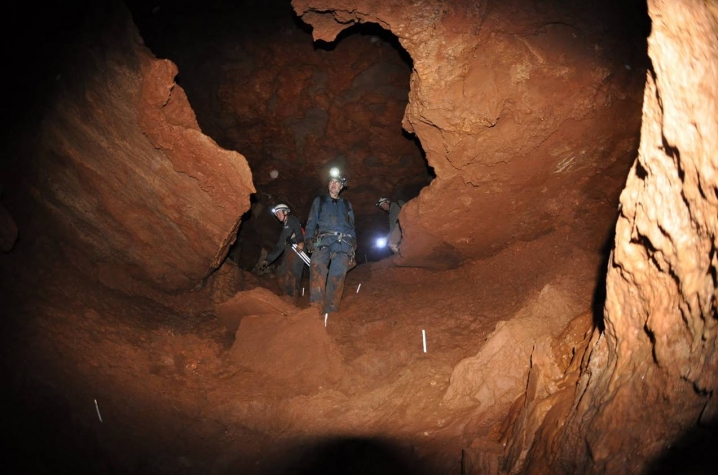Researchers Rediscover Prehistoric Artifacts in 3-D
LEXINGTON, Ky. (Nov. 18, 2010) - Archaeologists have long used digital photography to document ancient findings, but a group from the University of Kentucky Center for Visualization and Virtual Environments (Vis Center) is using structured light illumination (SLI) to also gather 3-dimensional data on such artifacts, allowing for scientific measurement and further study.
In September 2010, Blazie Professor Larry Hassebrook, Bill Gregory and graduate student Eli Crane joined cave specialists and Transylvania University professor Christopher Begley in exploring a Missouri cave to capture 3-D scans of human footprints, bear paw prints, and cave art, all believed to be from the mid-1400's.
Carbon dating indicates that the cave was sealed off around 1435 A.D., perhaps by a cave-in. In 1985, the cave reopened by a natural sink hole. In order to insure the protection of the cave's rare artifacts, the landowners granted generous access for scientific exploration and study on the condition that the cave's location be kept secret.
[IMAGE2]The group entered the cave by rappelling in and then lowering equipment by rope. Hassebrook and the Vis Center team brought their extensive experience with SLI research and development, as well as their mobile SLI scanner which is battery operated for remote mixed resolution scanning without need for a generator. The team worked on two sites in the cave, one with human and bear prints, and the area with the cave art.
The expedition was a success, collecting more than a dozen 3-D scans of the prints and artwork. The scans produce a 3-D point cloud with more than 2 million 3-Dimensional points as well as a 18 million pixel color image. These can be combined into one color 3-Dimensional scan. Adding the 3-Dimensional coordinates to every pixel allows for scientific measurement of the data.
Hassebrook has already used the SLI scanning technology in Honduras, Kentucky and Spain, as well as various laboratory scans. The mobile mixed resolution SLI scanner shows great potential for further data acquisition of archaeological artifacts in remote or sensitive areas.







